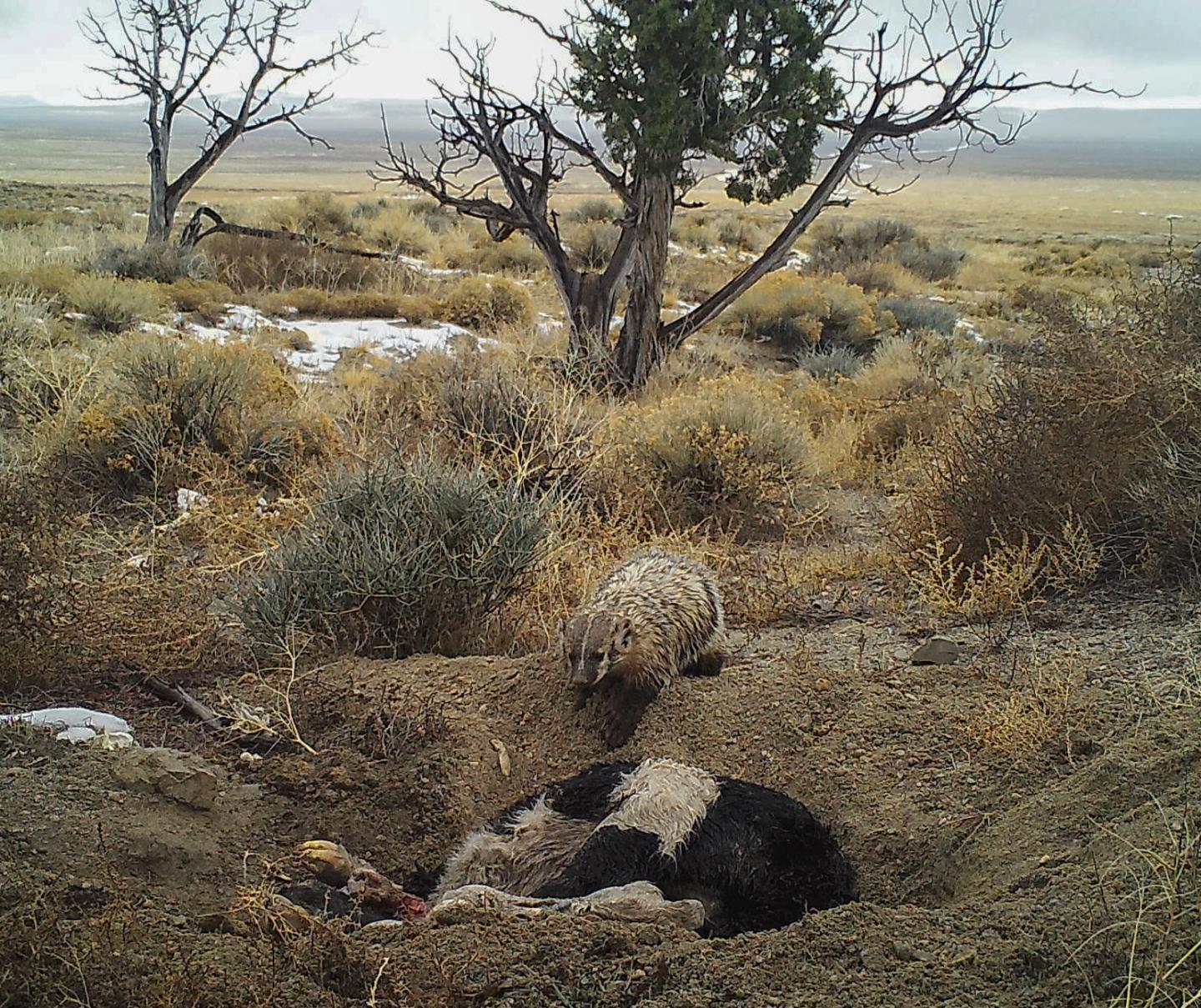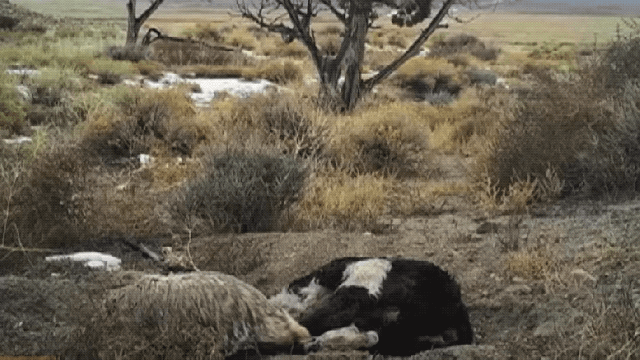Camera traps set up in Utah’s Great Basin Desert have captured unprecedented behaviour showing a badger burying an entire cow by itself. Incredibly, the buried carcass was able to sustain the badger for months.
To protect its food from other animals, and in the absence of a refrigerator, this badger did what any crafty scavenger would do: It buried its meal. Scientists have seen this caching behaviour in badgers before — burying animals like rabbits and rodents — but this is the first time a badger has been seen burying an object larger than itself. The details of this remarkable observation have been published in the science journal Western North American Naturalist.
The University of Utah researchers who made the discovery weren’t actually studying badgers per se. Rather, they were studying the ecology of scavengers in the Great Basin during winter. To that end, they set up seven calf carcasses in Utah’s Grassy Mountains in January 2016. Each calf was staked to the ground and equipped with a camera trap to document any lucky scavengers who might stumble upon the easy meal. If anything, the researchers were expecting to find photos of vultures or other opportunistic birds.
After a week, doctoral candidate Evan Buechley went to visit the sites, and noticed that one of the carcasses had gone completely missing. Thinking a coyote or a mountain lion dragged it away, he looked around, but found nothing.
“When I first got there I was bummed because it’s hard to get these carcasses, to haul them out and set them up,” he noted in a press release. “I thought ‘Oh, well we’ve lost one after a week.’” But then he noticed that the ground where the carcass had been laid was disturbed. “Right on the spot I downloaded the photos,” he said, “We didn’t go out to study badgers specifically, but the badger declared itself to us.”

Caught in the act. (Image: Evan Buechley)
Looking at the photos, Buechley and his colleagues watched the progression of events. Over the course of five days, the male badger started to dig around and under the dead calf, kicking up dirt, and eventually covering up the dead beast completely — a remarkably industrious feat given that the calf was about three to four times larger than the badger itself.
Once its task was complete, the badger retreated to its den for a few days. But then, over the course of the next few weeks, it repeatedly revisited the site to feed on the carcass — a routine that lasted until early March.
As noted in the new paper, badgers isolate their food to protect it from other scavengers, and to keep it in an environment where it will last longer. Importantly, another badger at another site also attempted to bury a calf carcass, so this wasn’t an isolated incident.
This unprecedented behaviour shows there’s still much to learn about badgers, and the extent to which scavengers will work to hide their meals.
